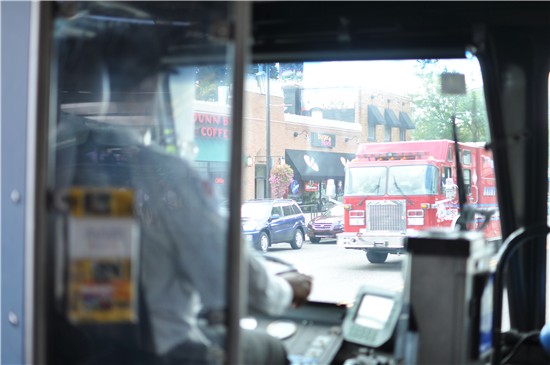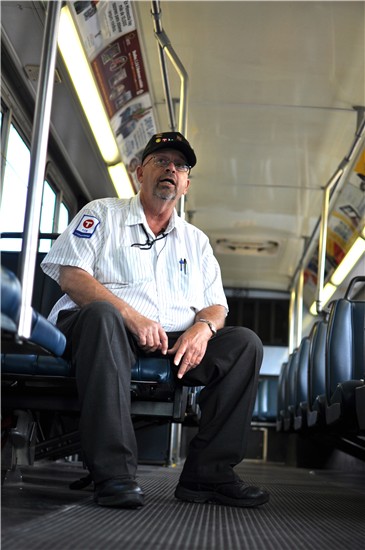
When Randy Finch began working at Metro Transit, fares were 30 cents, bus drivers didn’t wear seatbelts and buses could move with relative freedom on local streets and highways. The world has changed a bit since then.
But there is one thing that has stuck with Finch over the course of his 35-year career: the Safety Keys promoted by the Smith System.
The training program was developed for professional drivers more than 60 years ago in response to dangerous driving conditions and is widely used by transit agencies, trucking companies and other organizations that employ professional drivers. Metro Transit bus operators go through the course when they are hired and are regularly re-certified throughout their career.
A trainer at South Garage for the last decade, Finch said he follows the Smith System “religiously” on and off the job and tells new bus operators to do the same. Speaking to a recent class, he urged trainees to focus on its three essential components: space, visibility and time.
“If you have all three of those things, the majority of the time you won’t get into trouble,” Finch said.
Other tenants of the Smith System encourage drivers to keep their eyes in constant motion, seek eye contact from other drivers and to get the “big picture.”
 Relying on the Smith System’s lessons has served Finch well. After three decades of service, Finch has won 33 consecutive Safety Awards. Finch has also been named Garage Champion at South Garage at four of the last six Roadeo competitions and was named Roadeo Champion in 2010. Roadeo is a voluntary annual safety and skills competition for bus drivers.
Relying on the Smith System’s lessons has served Finch well. After three decades of service, Finch has won 33 consecutive Safety Awards. Finch has also been named Garage Champion at South Garage at four of the last six Roadeo competitions and was named Roadeo Champion in 2010. Roadeo is a voluntary annual safety and skills competition for bus drivers.
Finch says the lessons taught in the Smith System apply to all drivers but are particularly important for bus drivers facing unique challenges as they usher customers around the Twin Cities.
Metro Transit buses weigh 20 to 33 tons and their 8.5-foot wide frame makes them among the widest vehicles on the road. Add weather, customers and schedules to the mix and the conditions become even more difficult.
“It’s the hardest thing in the world to come to this job and drive a bus,” Finch said. “It’s not just getting behind the wheel – there are a lot of things you have to remember.”
Kerwin Hall drove semis before joining Metro Transit in May and said his brief experience driving route 4, 14 and 589 has already shown him just how demanding the job can be.
“This is operating a bus, not driving a bus,” he said after finishing Finch’s class. “There’s just so much that comes into play. It really involves putting a lot of things together to make things happen.”
Whatever the difficulties, Finch said there is a simple way to put operating a bus in perspective: treat the customers onboard as if they were members of your own family.
“You wouldn’t want your family to get hurt and you don’t want your passengers to get hurt either,” he said. “They just want to get from ‘Point A’ to ‘Point B’ safely, that’s all.”
> WCCO: Testing Bus Driving Skills with Metro Transit
> Metro Transit safety and security efforts earn industry accolades
> Metro Transit Roadeo
> Bus Safety